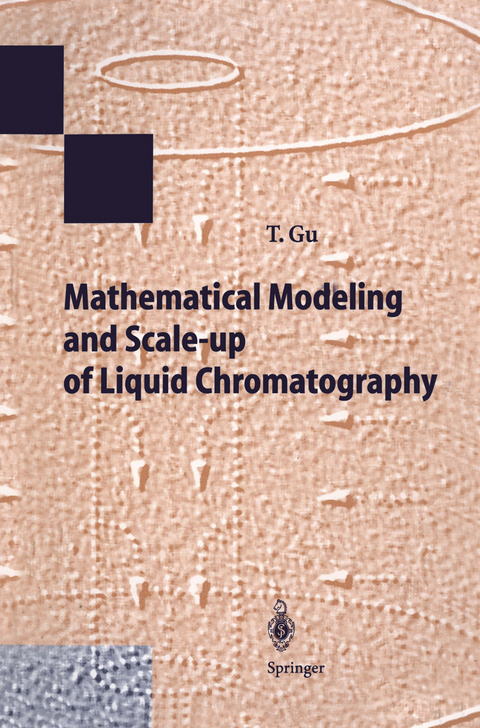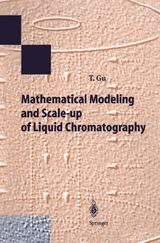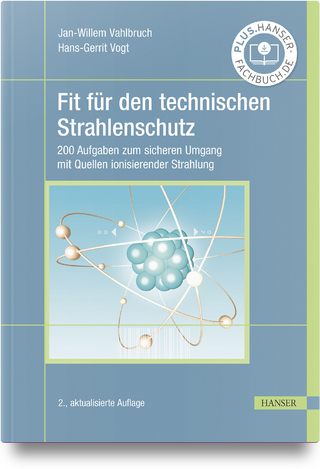Mathematical Modeling and Scale-up of Liquid Chromatography
- Keine Verlagsinformationen verfügbar
- Artikel merken
Liquid chromatography has become an indispensable tool for the preparative- and large-scale purifications of proteins and other fine chemicals. This book provides models which can be used to simulate various chromatographic operations and thus give good predictions for the transferation of laboratory methods into large-scale applications. Thus the book will be a useful tool for all Biotechnologists, Chemical Engineers, Biochemists, Microbiologists, and other Scientists working with separation techniques.
1 Introduction.- 2 Literature Review.- 2.1 Theories for Nonlinear Multicomponent Liquid Chromatography.- 2.1.1 Equilibrium Theory.- 2.1.2 Plate Models.- 2.1.3 Rate Models.- 2.1.3.1 Rate Expressions.- 2.1.3.2 Governing Equation for the Bulk-Fluid Phase.- 2.1.3.3 General Multicomponent Rate Models.- 2.1.3.4 Numerical Solutions.- 2.1.3.5 Solution to the ODE System.- 2.2 Scale-Up of Liquid Chromatography.- 3 A General Multicomponent Rate Model for Column Liquid Chromatography.- 3.1 Model Assumptions.- 3.2 Model Formulation.- 3.3 Finite Element Formulation for the Bulk-Fluid Phase Governing Equation.- 3.4 Orthogonal Collocation Formulation of the Particle Phase Governing Equation.- 3.5 Solution to the ODE System.- 3.6 Fortran 77 Code for the General Multicomponent Rate Model.- 3.7 CPU Time for the Simulation.- 3.8 Extension of the General Multicomponent Rate Model.- 3.8.1 Second Order Kinetics.- 3.8.2 Addition of Size Exclusion Effect to the Rate Model.- 3.9 The Question of Choosing Column Boundary Conditions.- 4 Mass Transfer Effects.- 4.1 Effects of Parameters PeLi, Bii and ?i.- 4.2 Effect of Flow Rate.- 4.3 Effect of Mass Transfer in a Case with Unfavorable Isotherm.- 5 Interference Effects in Multicomponent Chromatography.- 5.1 Introduction.- 5.2 Computer Simulation and Discussion.- 5.2.1 Displacement Mode.- 5.2.2 Frontal Adsorption Mode.- 5.2.3 Elution Mode.- 5.2.3.1 Adsorption Equilibrium Constants.- 5.2.3.2 Low Adsorption Saturation Capacity.- 5.2.3.3 High Sample Feed Concentration (Concentration Overload).- 5.2.3.4 Large Sample Size (Volume Overload).- 5.2.3.5 More Component(s).- 5.3 Summary.- 6 System Peaks In Multicomponent Elution.- 6.1 Introduction.- 6.2 Boundary Conditions for the General Rate Model.- 6.3 Results and Discussion.- 6.3.1 Modifier is Weaker than Sample Solutes.- 6.3.2 Modifier Affinity is Between those of Sample Solutes.- 6.3.3 Modifier is Stronger than Sample Solutes.- 6.3.4 Effect of Modifier Concentration on System Peak Patterns.- 6.3.5 Effect of Modifier on Sample Solutes.- 6.3.6 Effect of Sample Type.- 6.3.7 Effect of Sample Solutes on the Modifier.- 6.3.8 Summary of System Peak Patterns.- 6.3.9 Binary Elution with Two Different Modifiers.- 6.4 Concluding Remarks.- 7 Multicomponent Adsorption with Uneven Saturation Capacities.- 7.1 Introduction.- 7.2 Kinetic and Isotherm Models.- 7.3 Isotherm Crossover.- 7.4 Summary.- 8 Modeling of Affinity Chromatography.- 8.1 Introduction.- 8.2 Effect of Reaction Kinetics.- 8.3 Effect of Size Exclusion.- 8.4 Interaction Between Soluble Ligand and Macromolecule.- 8.4.1 Modeling of Reaction in the Fluid.- 8.4.2 Solution Strategy.- 8.5 Modeling of the Three Stages in Affinity Chromatography.- 8.6 How to Use the Fortran 77 Code AFFINITY.F.- 8.7 Summary.- 9 Modeling of Multicomponent Gradient Elution.- 9.1 Introduction.- 9.2 General Rate Model for Multicomponent Gradient Elution.- 9.3 Numerical Solution.- 9.4 How to Use the Fortran 77 Code GRADIENT.F.- 9.5 Summary.- 10 Multicomponent Radial Flow Chromatography.- 10.1 Introduction.- 10.2 General Multicomponent Rate Model for RFC.- 10.3 Numerical Solution.- 10.4 How to Use the Fortran 77 Code RATERFC.F.- 10.5 Extensions of the General Multicomponent Rate Model for RFC.- 10.6 Summary.- 11 Scale-Up of Liquid Chromatography using General Rate Models.- 11.1 Isotherms.- 11.1.1 Batch Adsorption Equilibrium Method.- 11.1.2 Column Method.- 11.1.3 Langmuir Isotherm.- 11.1.4 Other Isotherm Models.- 11.2 Mass Transfer Parameters.- 11.3 Evaluation of Pei, ?i, and Bii,.- 11.4 General Procedure for Scale-Up.- 12 References.- 13 Subject Index.
| Erscheint lt. Verlag | 21.6.1995 |
|---|---|
| Zusatzinfo | XIII, 125 p. 3 illus. |
| Verlagsort | Berlin |
| Sprache | englisch |
| Maße | 155 x 235 mm |
| Gewicht | 1 g |
| Themenwelt | Naturwissenschaften ► Chemie ► Physikalische Chemie |
| Schlagworte | Biochemie • biochemistry • Biotechnologie • Biotechnology • chemical engineering • Chemistry • Chromatographie • Chromatography • Expression • Flüssigchromatographie • Mathematical Modeling • Mathematische Modellierung von Systemen • Reaction • Theoretische Chemie |
| ISBN-13 | 9783540588849 / 9783540588849 |
| Zustand | Neuware |
| Informationen gemäß Produktsicherheitsverordnung (GPSR) | |
| Haben Sie eine Frage zum Produkt? |
aus dem Bereich




